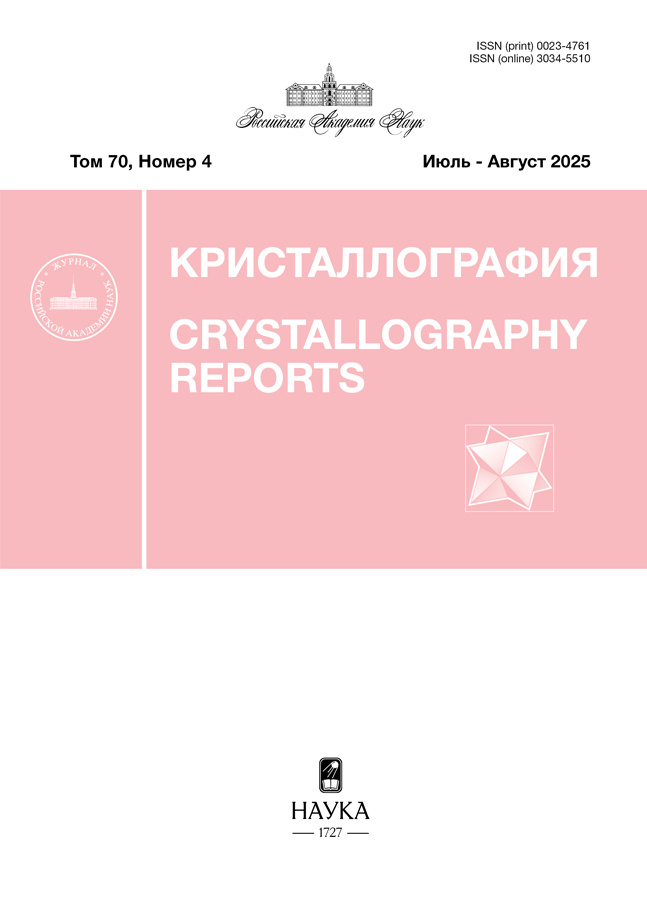Crystallization of proteins using a temperature gradient
- Authors: Strelov V.I.1, Safronov V.V.1, Supelnyak S.I.1
-
Affiliations:
- National Research Centre “Kurchatov Institute”
- Issue: Vol 70, No 4 (2025)
- Pages: 598–603
- Section: КРИСТАЛЛОГРАФИЯ В БИОЛОГИИ И МЕДИЦИНЕ
- URL: https://clinpractice.ru/0023-4761/article/view/688083
- DOI: https://doi.org/10.31857/S0023476125040082
- EDN: https://elibrary.ru/JFXRXV
- ID: 688083
Cite item
Abstract
The paper presents the results of many years of work on the development of a new method of temperature control and the apparatus developed on its basis for the automatic growth of protein crystals, in which the possibility of separate control of both the process of nucleation and growth of the formed crystals is realized.
Full Text
About the authors
V. I. Strelov
National Research Centre “Kurchatov Institute”
Author for correspondence.
Email: strelovvi@mail.ru
Russian Federation, Moscow
V. V. Safronov
National Research Centre “Kurchatov Institute”
Email: strelovvi@mail.ru
Russian Federation, Moscow
S. I. Supelnyak
National Research Centre “Kurchatov Institute”
Email: strelovvi@mail.ru
Russian Federation, Moscow
References
- Giegé R. // FEBS J. 2013. V. 280. P. 6456. https://doi.org/10.1111/febs.12580
- Rosenberger F., Meehan E.J. // J. Cryst. Growth. 1988. V. 90. P. 74. https://doi.org/10.1016/0022-0248(88)90300-4
- Garcia-Ruiz J.M., Moreno A. // J. Cryst. Growth. 1997. V. 178. P. 393. https://doi.org/10.1016/S0022-0248(96)01188-8
- Rosenberger F., Howard S.B., Sowers J.W., Nyce T.A. // J. Cryst. Growth. 1993. V. 129. P. 1. https://doi.org/10.1016/0022-0248(93)90427-X
- Tabor H.G., Jasak H., Fureby C. // Comput. Phys. 1998. V. 12. P. 620.
- Safronov V.V., Krivonogova N.V., Bezbakh I.Zh., Strelov V.I. // J. Mol. Liquids. 2019. V. 284. P. 353. https://doi.org/10.1016/j.molliq.2019.04.013
- Otalora F., Garcia-Ruiz J.M. // J. Cryst. Growth. 1997. V. 182. P. 141. https://doi.org/10.1016/S0022-0248(97)00325-4
- Carotenuto L., Piccolo C., Castagnolo D. // Acta Cryst. D. 2002. V. 58. P. 1628. https://doi.org/10.1107/S09074449010116444
- Lin H., Rosenberger F., Alexander J.I.D. // J. Cryst. Growth. 1995. V. 151. P. 153. https://doi.org/10.1016/0022-0248(95)00016-X
- Vekilov P.G., Rosenberger F., Lin H. // J. Cryst. Growth. 1999. V. 196. P. 261. http://doi.org/ 10.1016/S0022-0248(98)00840-9
- Lee C.P., Chernov A.A. // J. Cryst. Growth. 2002. V. 240. P. 531. https://doi.org/10.1016/S0022-0248(02)00909-0
- Savino R., Monti R. // Int. J. Heat Mass Transfer. 1999. V. 42. P. 111. https://doi.org/10.1016/S0017-9310(98)00140-9
- Безбах И.Ж., Захаров Б.Г., Стрелов В.И. и др. // Тр. 6-й Междунар. конф. “Рост монокристаллов и тепломассоперенос” (ICSC-2005). Обнинск. 2005. Т. 3. С. 545.
- Bezbakh I.Zh., Ginkin V.P., Safronov V.V. et al. // J. Mol. Liquids. 2019. V. 283. P. 652. https://doi.org/10.1016/j.molliq.2019.03.042
- Стрелов В.И., Захаров Б.Г., Безбах И.Ж. и др. // Кристаллография. 2018. Т. 63. № 1. С. 163. https://doi.org/10.7868/S0023476118010198
- Куранова И.П. // Поверхность. Рентген., синхротр. и нейтр. исслед. 2004. № 6. С. 4.
- Стрелов В.И., Куранова И.П., Захаров Б.Г., Волошин А.Э. // Кристаллография. 2014. Т. 59. № 6. С. 863. https://doi.org/10.7868/S0023476114060289
Supplementary files
















